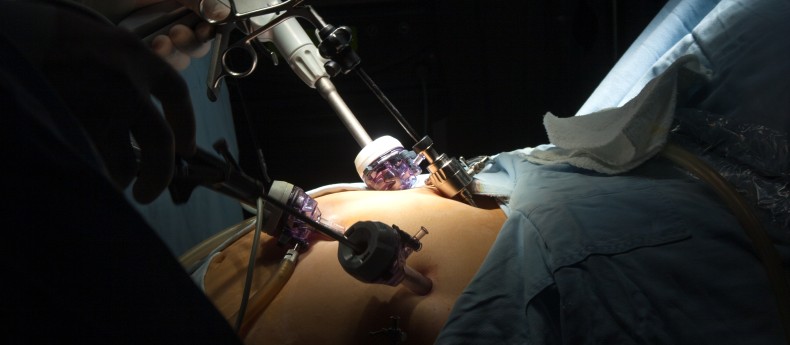
Keyhole Surgery: New Advances Result in Better Cosmetic Outcomes
Minimally invasive surgery, also known as laparoscopy or ’keyhole’ surgery, is now widely replacing many conventional operations and significantly reducing post-operational pain, recovery period and the possibility of incisional hernias. With the progression of modern surgery, appendectomies, cholecystectomies and even cancers of the stomach, colon and kidney can now be safely treated through laparoscopic procedures. In addition, keyhole surgery may also have the added benefit of improving cosmetic outcomes thanks to minimal scarring or assisting in weight loss.
Thyroid surgery
Minimally invasive surgery has dramatically changed many of the ways surgeons perform operations. After decades of development, these new techniques allow surgeons to accomplish the same surgical results, but with much less scarring compared to the conventional approach. Scarless Endoscopic Thyroidectomy is one such technique.
In the past, patients who required removal of a part of or entire thyroid lobe were left with a visible scar on the front of the neck from the 7-10cm curved incision made during surgery. With the scarless technique, the surgeon uses one 10mm incision and two 5mm incisions on the chest or armpit to approach the target area. By creating a subcutaneous space just under the skin, this allows access to the thyroid area to perform the excision. For patients concerned with post-operation appearance, this keyhole surgery option will achieve both medical and cosmetic goals. However in very rare cases, patients who undergo this surgery may develop more visually evident pathological scarring compared to a line-like scar resulting from conventional surgery.
Weight-loss
After growing increasingly popular in the West in the past decade, bariatric surgery, also known as weight-loss surgery, is now available in China. For people with issues of severe obesity, there are minimally invasive surgical techniques to help them lose weight. Candidates for the bariatric surgery include westerners who have a BMI > 35-40kg/m2 and Asians with a BMI > 27.5-32.5kg/m2; the procedure can help reduce up to 60-70% of the excess weight.
From a medical perspective, the weight loss not only makes the patient appear healthier, but actually increases health by reducing the risk of obesity-related diseases such as cardiovascular disease, diabetes mellitus and hypertriglyceridemia. A multi-center study showed that patients who underwent bariatric surgery were significantly less likely to require medications for cardiovascular disease or diabetes and dramatically improved their quality of life and mental well-being. Moreover, it is one of the most effective treatments for type 2 diabetes.
The surgery works by reducing the volume of the stomach so one eats less without still feeling hungry. There are several different ways to decrease the size of the stomach, and a surgeon will assist the patient in choosing the most appropriate procedure based on individual needs. Stomach reduction procedures can be either temporary or permanent; for those with severe obesity, a more comprehensive operation to re-channel the gastrointestinal tract to reduce the absorption of foods may be required. Most of the procedures require keyhole operation under general anesthesia, and a 2 to 5 day hospital stay.
For more information on keyhole surgery opportunities, please contact Dr. Wang Jun at wang.jun@ufh.com.cn or make an appointment to discuss your question with him in person.
References:
Agren G, Narbro K, Näslund I, et al. “Long-Term Effects of Weight Loss on Pharmaceutical Costs in Obese Subjects: A Report from the SOS Intervention Study.” Int J Obes Relat Metab Disord. 2002; 26:184.
Copyright United Family Healthcare 2018 All right reserved ICP 京ICP备13017554号-4



